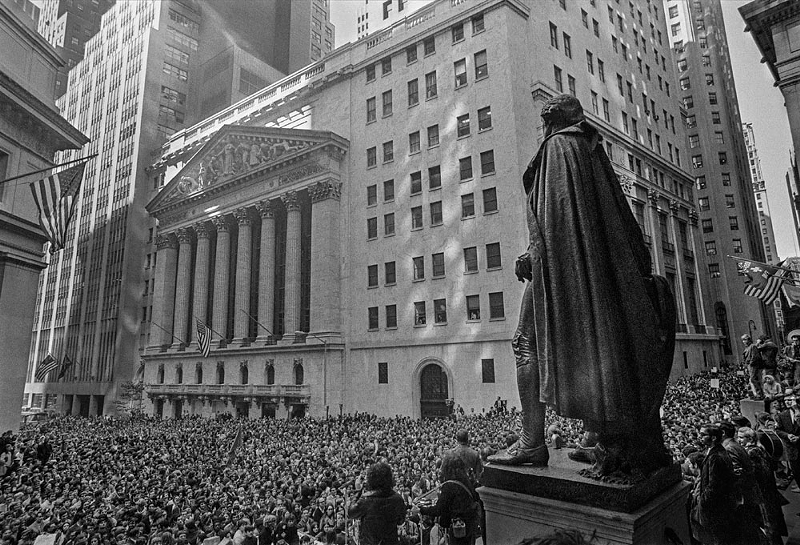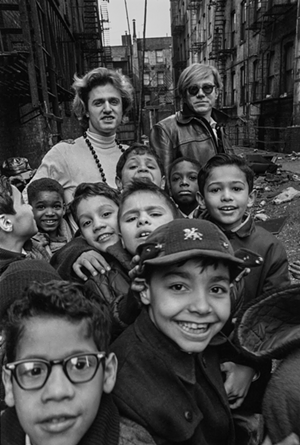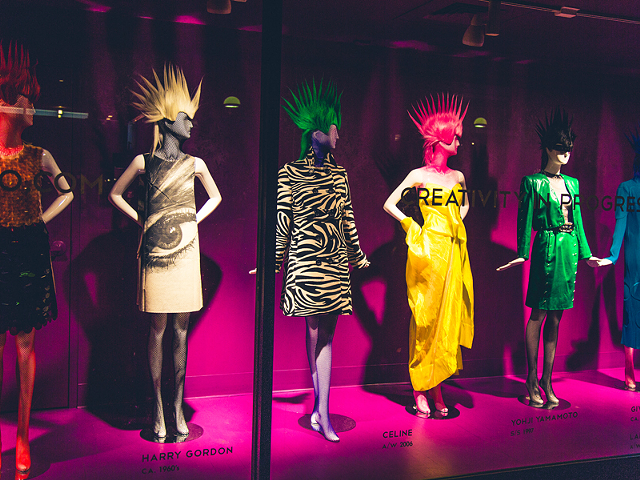And on Jan. 21 of this year, he photographed for Vanity Fair the massive Women’s March on Washington, a startlingly large show of resistance to the just-begun extremist administration of President Donald Trump. (The magazine’s website hosts a slideshow of Fink’s black-and-white portraits from the march; he’ll also show images at his lecture.)
He sees similarities and differences between the protests of the 1960s and now. “In the 1960s, the marches were attended by very good and magnanimous people, but also by those with a ruffian rage based on the fact the Vietnam War had been going on for many, many years and had no apparent rationale,” he says in a phone interview.
“Plus, there was a kind of revolutionary activity with the Weather Underground and some left-wing students,” he continues. “I’m a leftist myself so I had no problem with it, but it became their focus to use a peace march for those kinds of ideological ambitions.”
This time, he says, that element was gone. “In this particular march, Trump had just gotten into office and, while he is a ruffian and a vagabond of ill-tempered ethics, we hadn’t suffered from him yet,” he says. “The march was the result of their (concern) at what we would become subject to. So the women who came to this march, for the most part, came with a sense of their own empowerment, based on the fact their love was ever present and omnipresent. It was a magnificent event.
“I was crying,” the 76-year-old Brooklyn-born photographer continues. “I was overwhelmed by the positive emotions. This march personified love in the highest.”
Fink started taking photographs at age 12, but says his real education came while studying at New York’s New School for Social Research with Lisette Model, the Austrian-born photographer whose explorations of everyday life in the big city and elsewhere have been heralded as soulful, insightful work brimming with authenticity.“Lisette put me in touch with what it meant to photograph through your experience and through your deep humanity,” Fink says. “She was a purveyor of the notion that without an experience going on in front of your camera to which you’re passionately attached, there’s no photograph to be made. Making pictures for their own sake wasn’t anything she was interested in. And that’s the way I’ve taught for 55 years. I’m trying to keep that legacy alive.”
Working primarily in black-and-white, Fink began an active career that saw a notable breakthrough occur in 1984 with his book Social Graces, which paired photographs taken in the 1970s of New York’s wealthy, sophisticated partiers and socialites with the less stylish working-class residents of rural Martin’s Creek, Penn.
He has shot in color occasionally, but finds black-and-white truer for his intentions because he doesn’t have to take color into consideration. “Palette is a promiscuous element, especially if you’re working extemporaneously,” he says. “Black-and-white is reductive. It leaves you up to the moment, the emotions, the form and the light.”
Fink’s latest published project, due in April, is a book called Fink on Warhol: New York Photographs of the 1960s, based on his rediscovery of photographs made for a 1966 magazine assignment. The magazine commissioned Fink for a fashion shoot of Andy Warhol’s arty entourage on the streets of the Lower East Side, interacting with the grittier environment.
“We did a lot of locales — butcher shops, parking lots, schoolyards and God knows what,” Fink says. “And then also, I went up to Factory and hung out there.
“I didn’t like Andy Warhol particularly,” he continues. “He was very distanced and not a particularly deep guy. However, I had a good time photographing those characters.”
Fink, at the time of this interview, was recovering from a leg injury. But he was eager to resume photography.
“Life is my project,” he says. “I seem not to give up on it. My pictures keep being vital. I don’t seem to burn out on it.”
LARRY FINK’s lecture is at 7 p.m. Wednesday at the Cincinnati Art Museum. It’s free; reservations are not needed. More info: cincinnatiartmuseum.org.







